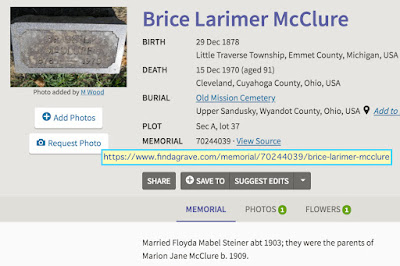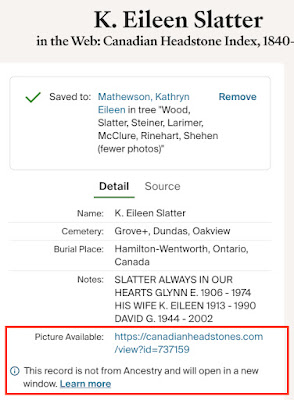Based in Brussels, she serves as country manager for MyHeritage in Belgium and has expertise in a wide range of genealogical and historical topics, including World War I and World War II.
Here's my interview with Marie, who returns to RootsTech Connect in 2022 with three engaging talks for family historians.
*
Question 1: How does your background in history help you when researching and writing about ancestors who lived and died many generations in the past?
Marie: I see it as a symbiosis: The two disciplines are so interconnected. I so much regret that European academics don't see the connection as much as Anglo-Saxons do because both parties would learn so much from each other.
I start with a good perspective of events, timelines and possible events that could have happened to our ancestors or could have triggered a change in their lives. I also have a good overview of the different relevant sources and can work my way through national archives in a quite natural way. This "zoom in-zoom out" approach is also surely helpful to think of all the relevant historical sources that can be used for a genealogical research so I'm very lucky to have those two backgrounds to rely on.
Question 2: Please share your top tips for combining DNA and traditional genealogy research to correct and expand a family tree.
Marie: One of my top tips is consider DNA as a (biological) source, and cross it with archives, documentation, and oral histories. Think outside the box: If you hit a brick wall, maybe one of the key elements to the solution (names/dates/places) is not right, or not entirely right, or has been distorted over time or when transmitted orally.
When combining DNA and genealogy research, don’t be afraid to dive into other family trees, regardless of the possible lack of connection at first. Often, at least in Europe, people are wary of researching someone they don't know, let alone someone who's still alive. The privacy regulations also make it more difficult, but not impossible, to access direct birth, marriage, and death information. People shouldn't be afraid to work those trees out to see if it makes sense to them along the way.
Of course, there's a need for privacy regulations but some sources can be useful to overcome those difficulties and reconstruct trees with people who at first seem to be "strangers" but turn out to be genetic relatives. Both approaches are very important and equally valuable. Amongst other things, DNA needs family history to construct the trees of DNA matches and family history needs genetics to prove/disprove connections. Genealogy alone is like an old school puzzle and now with DNA, it's tridimensional and even more fun even if it is challenging.
Question 3. Have you confirmed or disproved a family story you heard about your ancestors?
Marie: Yes, I have disproved a family legend that was running around the family. My grandmother always told me we were descended from a rich noble Italian family. It turned out that my 3x grandfather born in 1816 was in fact an abandoned child. The period makes me think that the "father" could be a fleeing soldier but of course nothing is proven at this point.
The civil registration office custom at the time was to use antique Italian or Greek related surnames to name foundlings. My ancestor was given an Italian-sounding surname. The child before him was a Nero and the one after Cupido so I guess we were lucky he was named Tigilin (“an aide to Nero”). Those children rarely made it out of infancy. Now, more than a century later, the story has evolved over the time to give it a more dignified touch but my research set the record straight. I suspect my percentage of Italian DNA is related to that line.
Question 4. What will you be speaking about at RootsTech?
Marie: This year, I'm giving three lectures, one on Belgian immigrants to the United States, one on family food heritage, and one in French about how to do research on Belgian-language and French-language online newspapers websites. I'm also giving a talk as a Country Manager for MyHeritage.
One subject that I've been wanting to cover for a long time was cooking heritage and how family recipes are passed from one generation to another. I'm not really a foodie--I'd rather spend time on genealogy than cooking in the kitchen and have my nose in books rather than putting on an apron--but I really like old personal cookbooks as sources of how people lived, what they were eating on a daily basis or for any special events.
Food is a key part of any culture and it's fascinating to see how it's been passed on, from old notebooks--my favorites--to the social media content of today. The pandemic has given a lot of people more time to spend in the kitchen, and of course the natural go-to recipes are the ones that were in the family for generations. These were often passed down from mothers to daughters or daughters-in-law with some additions or changes to the recipes. Sometimes these recipes were considered secrets to be carefully guarded.
Question 5. How do you plan to get the most out of the virtual RootsTech experience in 2022?
Marie: By not sleeping much? Joke aside, as much as I miss the on-site event, I found out that I could enjoy some lectures much more for my personal learning which is a bit more complicated to do on-site. I also really appreciate that the content is made available for months after the conference so we can catch up or replay if we choose. But nothing will ever beat the Salt Palace atmosphere and face-to-face conversations with genealogists. RootsTech is always the moment where the big players announce brand new features so I'm really excited to witness that.
One tip that I always give, regardless of the show being online or on-site, is to know that you won't be able to take it all so it's very important to make your own list of what you want to see first, or of what is more relevant to your interests.
Another tip: Pick a lecture that you wouldn't typically pick. It's a great way to learn new things and learn about other cultures, or archives, or stories—choose something out of the usual categories you go to and out of your comfort zone.
Question 6: How you are using cooking to share your heritage with your family?
Marie: What I like to do when cooking a family recipe (whether one from my mum or her mum) is to give a bit of historical context to it. My mum was born in England during World War II and my grandmother would pick up local recipes and sometimes adjust them with local ingredients if something wasn’t available.
I'm still making her recipes from England as well as cooking foods traditional to my husband's family, descended in part from Dutch ancestors. Whenever I cook those recipes, it's always a great opportunity to tell a story about our ancestors or keep the family updated with the latest research/discovery without them even noticing or being bored the way they could be if food wasn't involved ;) Remember how our mothers would hide greens in something we liked so that we would eat it without knowing? Well, recipes are a bit like that for family history!
I also love to celebrate our heritage through food on special occasions. Food is a great medium to do that, especially baking. For my wedding, the cake was created to honor our English, French, Belgian and Dutch roots all in one cake. It really had a special meaning to me. In addition, Christmas is a time when family cooking traditions play an important role, and my household is no exception.
The best part of being a "passer" of this culinary heritage is not only to keep our ancestors alive through our plates but also to create new family culinary traditions. During lockdown, a lot of people discovered their kitchen with brand new eyes and it was the perfect occasion to study, and try, family recipes, away from the day-to-day rush. Of course, famous chefs, who are often so quick to stage their own family recipes, also had to reinvent themselves. But other public figures, not necessarily in the cooking world, did so as well.
One example I really like is the one of Danny Wood (NKOTB) who saw an opportunity during the pandemic to set up a show he's been thinking about doing for quite a while. Although not a chef, he likes to cook for his family. Often he makes recipes from his mother or shows what he’s baking for his grandchildren, capturing the cooking experience on a YouTube channel aptly named "The Wood Works."
I find this example striking because he’s not a renowned and super skilled chef in the most professional kitchen with the latest sponsored utensils. He’s a public figure simply sharing his enjoyment of passing on family kitchen traditions, or inventing/trying new family recipes and entertaining his audience at the same time. Danny Wood takes great pleasure into demonstrating his cooking skills and it shows. Even more importantly, he likes to share the family history behind the recipe and invites his guests to do the same.
These days, all kinds of people use social media to pass on family recipes by creating posts, stories, videos, Instagram Reels and TikTok videos, and more. Every time a long-ago ancestor is mentioned in a family recipe story or post, it's genealogy in the making. It's a real challenge to think of a way to preserve these newer methods of communicating family recipes for the sake of generations to come. The field is open for the future to determine how to preserve and pass on those newer transmissions ;)
*To connect with Marie Cappart:
Twitter: @histfamilles
Facebook: Marie Cappart https://www.facebook.com/marie.cappart or page Histoires de Familles www.facebook.com/histoiresdefamilles.familiesstories/
Instagram: Marie Cappart




























